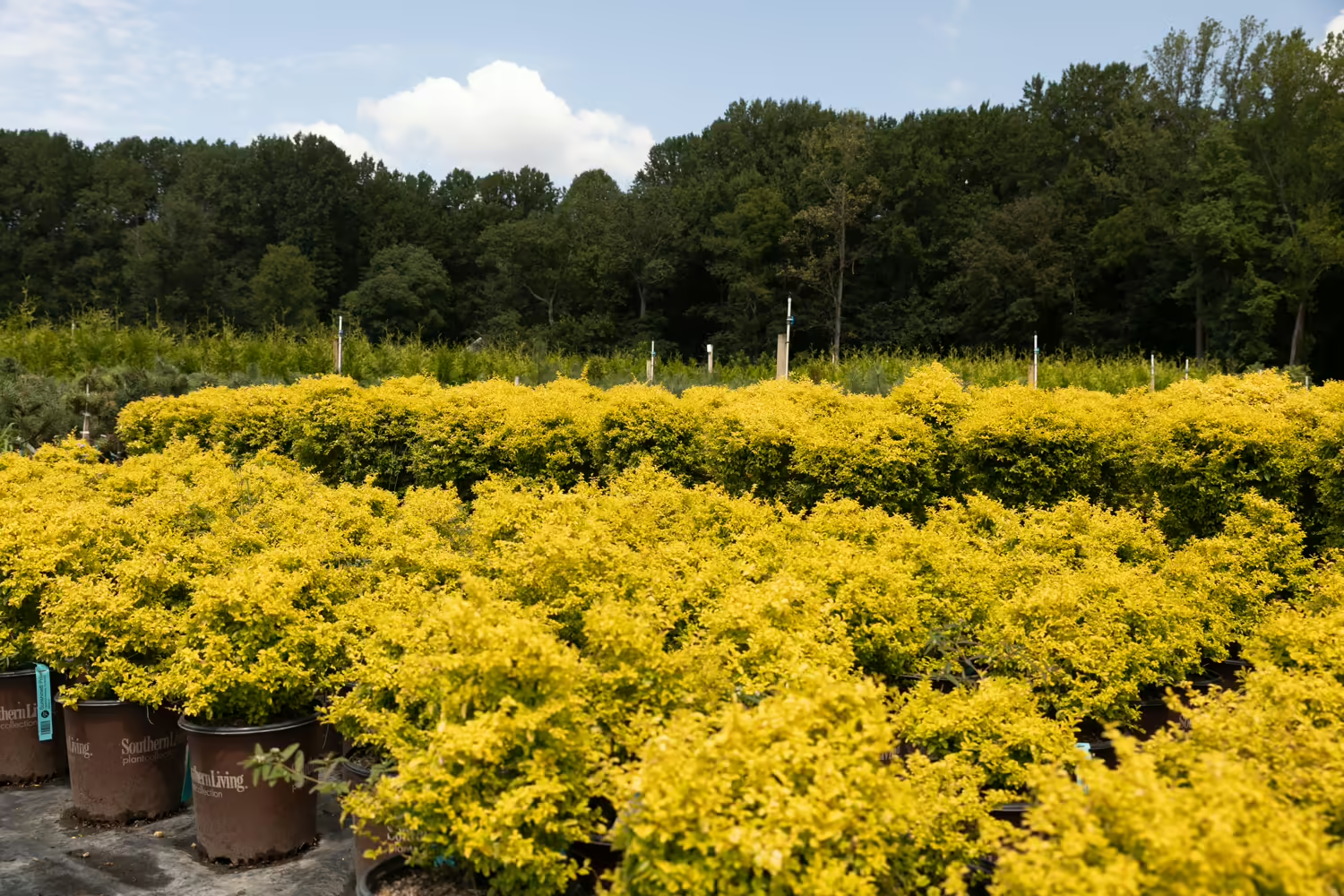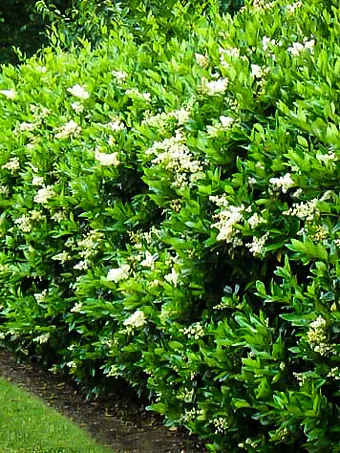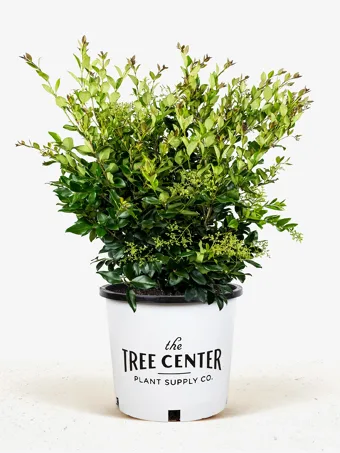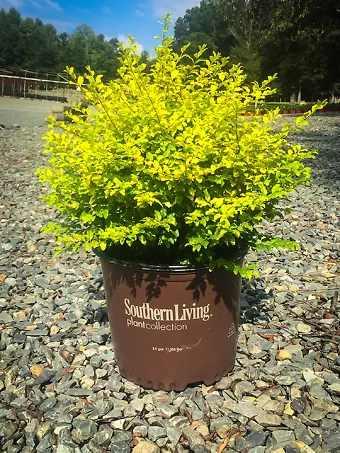
Written by s • Privet – the Good, the Bad and the Beautiful
Let’s face it – Privet has a bad reputation. Mention it to the average gardener and they picture a big, boring plant with green leaves that must be constantly battled with to stop it taking over, and which seeds wildly in every direction, invades the surrounding countryside, and ends up getting itself banned in multiple jurisdictions. But like the five-year-old who gets on a no-fly list because he shares a first name with a wanted terrorist, all privets don’t deserve this reputation, which springs from a few black-sheep who have sullied the reputation of the whole family.
The truth is that many privets are well-mannered garden subjects, flowering prettily, making great background plants, offering us trouble-free leaf-colors and generally getting on well with everyone else in the garden. We must just know who to invite over and who to have the bouncer throw out.
The Good
The Japanese privet (Ligustrum japonicum) is top of the good guys. Although sometimes given a bad rap, this is usually a result of misidentification, since all privets are generally similar in appearance, and it takes a little knowledge and experience to identify them accurately. Japanese privet is a small tree, but if planted with enough space allowed for their growth, it is an attractive and very tough plant and a great choice for a difficult area. Even more desirable are the smaller forms, and two in particular stand out.
The form called ‘Texanum’, which originated in that state but is widely grown today in California, reaches just a modest 6 to 8 feet tall. Known as the Waxleaf Privet, it is garlanded with large, 8-inch-long clusters of pure-white flowers in spring. This plant is small enough to grow in large pots and planter boxes, where, with its arching shoots, it makes an attractive terrace and patio plant. Similar in size is the curved-leaf privet, a variety of Japanese privet called ‘Recurvifolium’. It has twisted leaves that give an elegant air to this very easily grown evergreen, that can also be planted as an easily-maintained hedge.
Equally useful and relatively compact is the California privet (Ligustrum ovalifolium) which even if left untrimmed will never exceed 15 feet in height and more often stay around 10 feet tall. For low-maintenance, this plant stand out. It ignores drought and heat and it is easily trimmed into a hedge anything from 4 to 12 feet tall. It makes a great screen, and the honey-scented blossoms attract butterflies and are a valuable food source for them.
The Bad
Now let’s see who to cross off the invitation list. There are two species of privet that we can easily garden without, and be happier for the experience. If you live in the north-east, then European privet (Ligustrum vulgare) also called common privet, is the main bad-guy. This is a plant that will grow rapidly and crowd out your garden, as well as producing some dull flowers that never the less seed profusely, and have already spread into many north-eastern forests.
Further south the Chinese privet (Ligustrum sinense) is the playground bully. This plant is not especially cold-hardy, but it thrives in the warmth and humidity of the south-east, again seeding and spreading into natural forests and crowding out native species. The variegated from of Chinese privet is much tamer, and has attractive leaves edged in white. It grows more slowly and also flowers much less, so it doesn’t present the same environmental hazards.
Also sometimes called Chinese privet, but better called glossy privet, Ligustrum lucidum does indeed have attractive glossy foliage, but in areas like Texas it too is invasive. These plants spread outside the garden because birds eat the berries and then spread the seeds as they move about and do what birds do. . .
The Beautiful
It may seem that calling something as everyday as privet ‘beautiful’ is going too far, but well-tended privet, as a tree or a hedge, is a handsome plant that can earn a place in any garden. A tree in bloom is almost as attractive as a Japanese tree lilac, which everyone agrees is garden worthy, and privet has the added merit of being evergreen.
What makes privet beautiful is a little care from its owner. Regular trimming of a hedge turns it into an outstanding garden feature, and if the variegated Japanese privet is used, you have a hedge that sparkles with color all year round. Trimming shortly after flowering also removes the potential for seeding and spreading, so any possibility of becoming a weed is eliminated, while also keeping your plants tidy and attractive.
The final way to make privet beautiful is to allow enough room for it to fully develop. Far too often plants are put in places that are too small for them. Then they need constant trimming, cannot develop their mature attractive forms, and become a nuisance in the garden, ending up being removed after a few years. All plants need room to develop properly – measure your spot and compare it to the expected final size of the plant!









